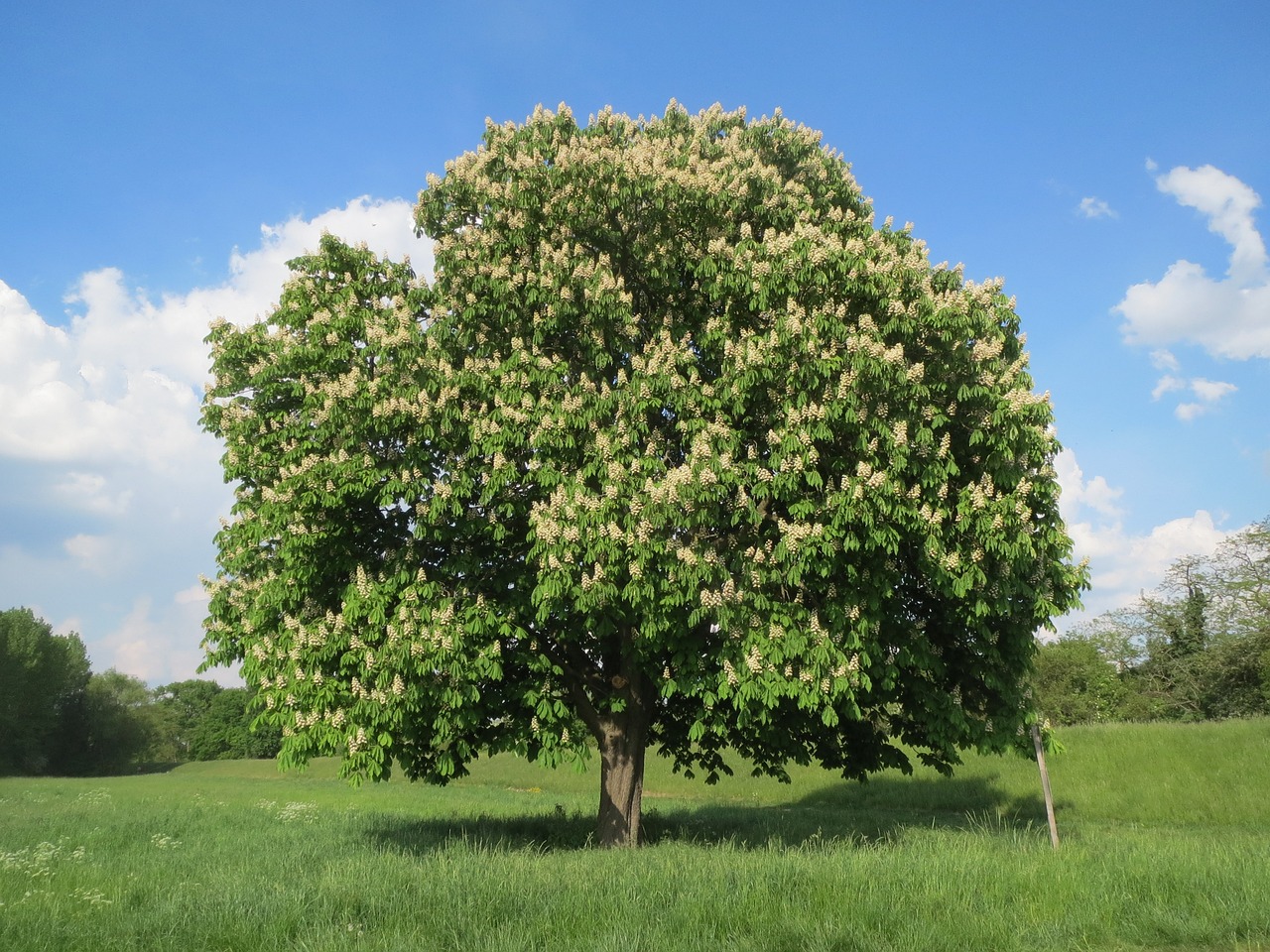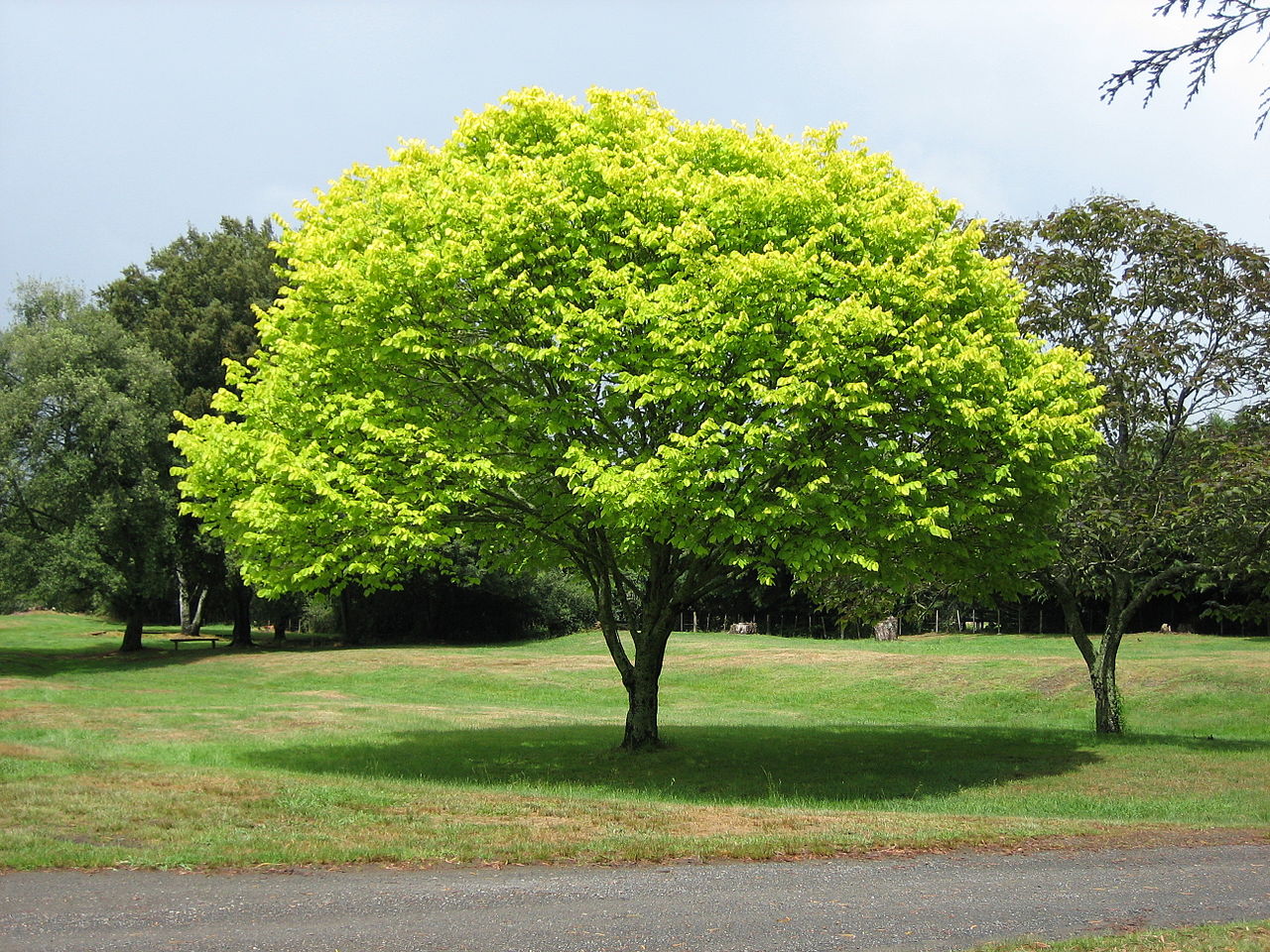
Image - Wikimedia / Floyd Wilde from Cambridge, New Zealand
When we embark on the company of decorating what promises to be a great garden, it is important that we choose well the species that we want to have in it. We not only have to think about the care they will need, but also about how its leaves behave Or, in other words, if they fall or not and, if they do, how often.
Thus, there are trees that we will have to place far from certain places, such as the pool for example, since otherwise we will have to clean it often. With this in mind, I'm going to tell you which are the trees that make little dirt.
There is no tree that doesn't make anything dirty
First of all, let me tell you something: all plants dirty. Regardless of whether they have evergreen or deciduous leaves, they will all fall off as new ones grow. In fact, the only difference is that evergreen plants shed their leaf parts throughout the year, and those that have expired ones fall off during the fall-winter or before the dry season if they are tropical.
Another subject that we do not always remember are flowers and fruits. Most trees flower in the spring and fruit in the summer / fall. It should be borne in mind that during these months the petals, the pollen, the little stalks that attached them to the branches, the fruits, the seeds will fall…; In short, to have a garden without any of this we will have to sweep every day, or every few days.
So, Which are the least messy?
Well, throughout these years growing plants and, above all, trees, I have come to the conclusion that the "cleanest" are those that meet these characteristics:
- They have the simple leaves, without dividing, and are larger than 2cm in length.
- Its fruits are 'dry', with which, even if they are stepped on, they will not leave a trace.
Selection of trees that make little dirt
That said, the trees that I recommend the most are:
Deciduous
Deciduous or deciduous trees are those who drop all their leaves at some time of the year. In temperate climates this time is autumn-winter, while in dry tropical climates it is shortly before or shortly after the start of the dry season (or less rainy).
Some examples of those that make little mess are:
Acer palmatum
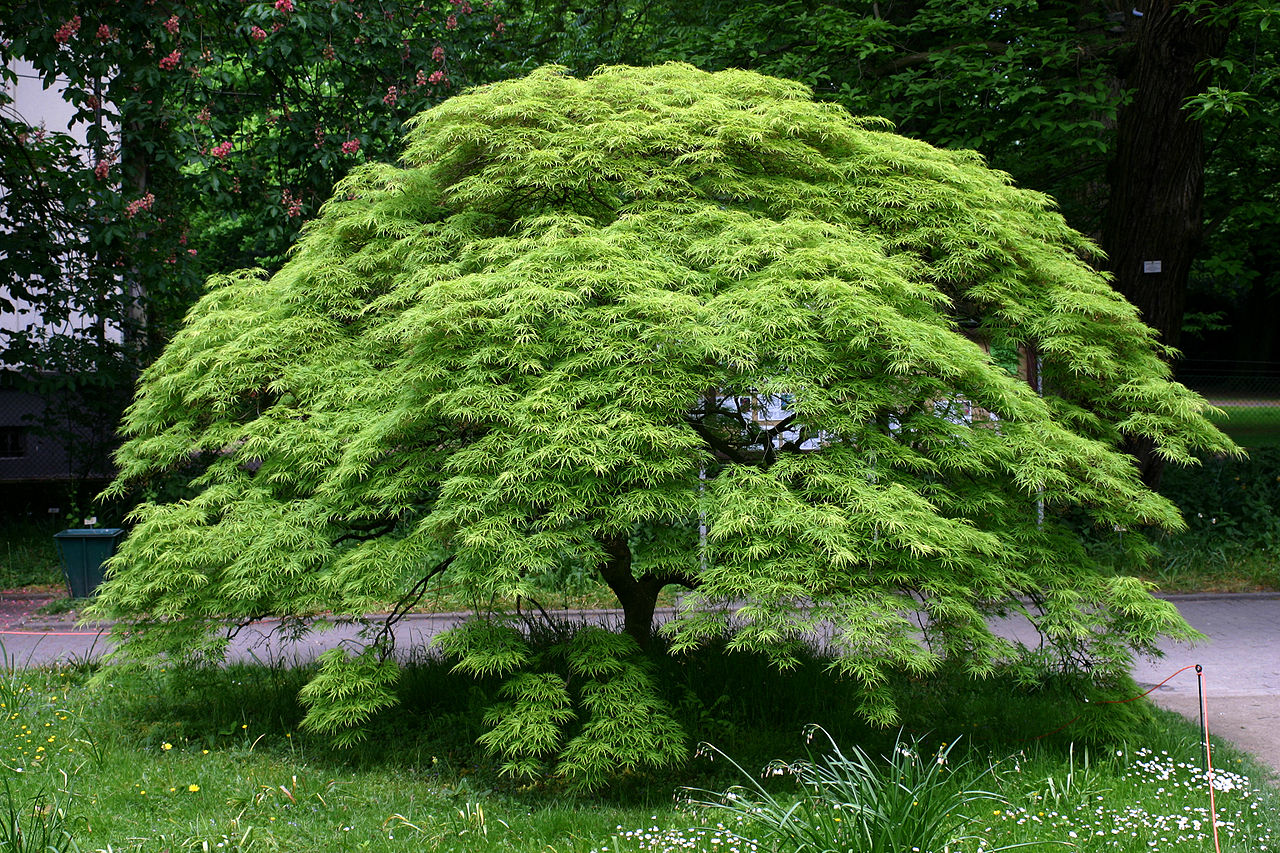
Image - Wikimedia / Rüdiger Wölk
El Acer palmatum, known as japanese maple, is a tree or small tree -depending on the variety and / or cultivar- native to Asia that can reach a height of up to 15 meters in the wild, but in cultivation rarely exceeds 5-6 meters; in fact, there are cultivars like the Little Princess that is only 2 meters tall. Its flowers bloom in spring.
It is a very interesting species, due to its size, elegance, as well as the colors that its leaves acquire before falling in autumn. What's more, resists up to -18ºC.
Aesculus hippocastanum
El Aesculus hippocastanumKnown as horse chestnut, it is an immense tree native to the Pindo Mountains (Greece) and the Balkans. Reaches a height of 30 meters, with a straight trunk and a crown formed by large palmate leaves up to 30 centimeters in diameter. It blooms in spring.
It provides excellent shade, although it needs a lot of space to grow. Resists up to -18ºC.
Chorisia speciosa
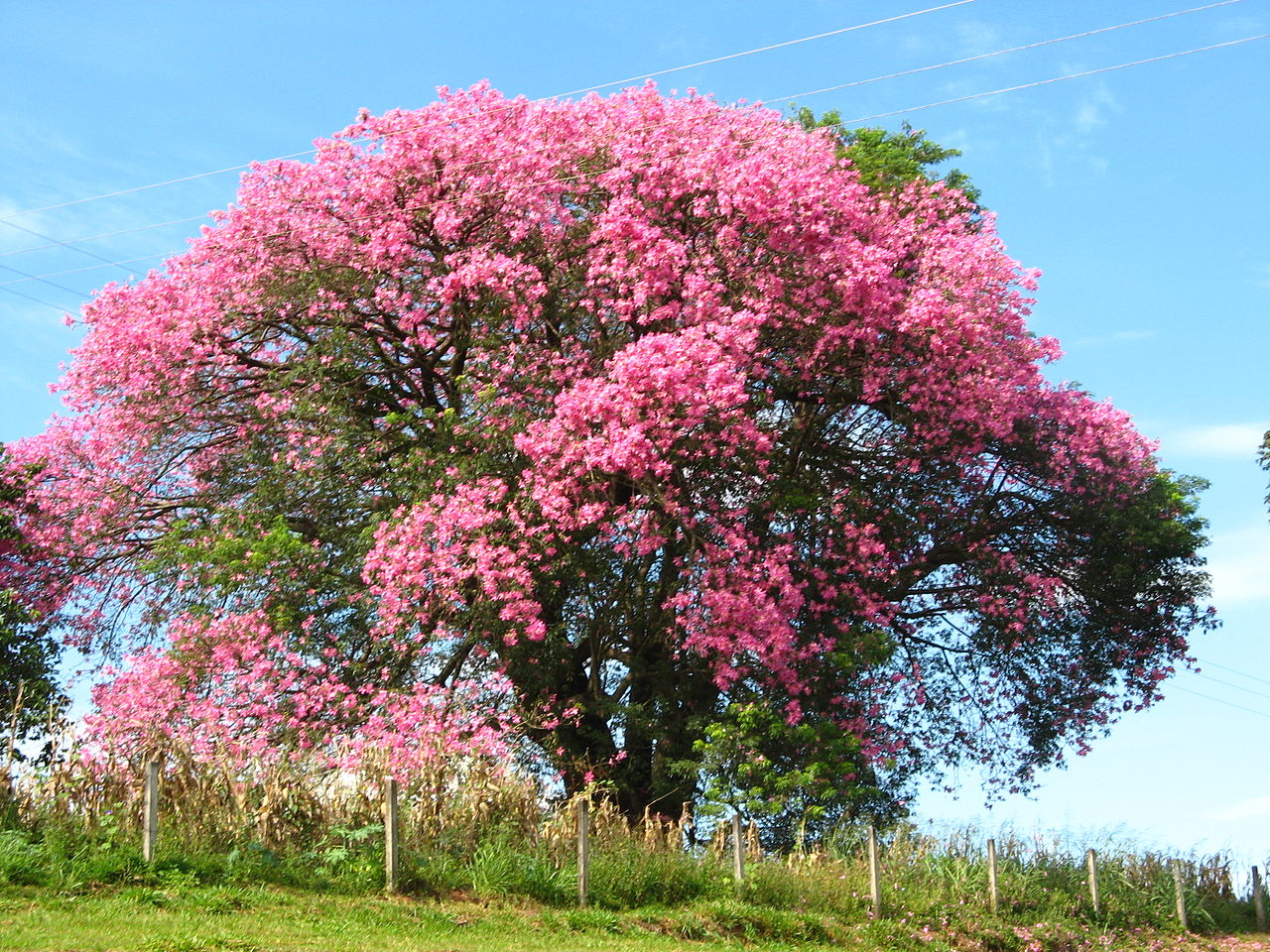
La Chorisia speciosa, known as the bottle tree or the orchid tree, is a deciduous tree native to Brazil, Argentina, Paraguay, Peru and Bolivia. Reaches a height of 12 to 15 meters, with a bottle-shaped trunk armed with conical spines. Its leaves are palmati-compound of about 12 centimeters. Its flowers sprout in spring, and its fruits finish maturing towards summer.
It grows very fast and resists dry periods if they are short. What's more, resists up to -7ºC.
Morus alba 'Fruitless'
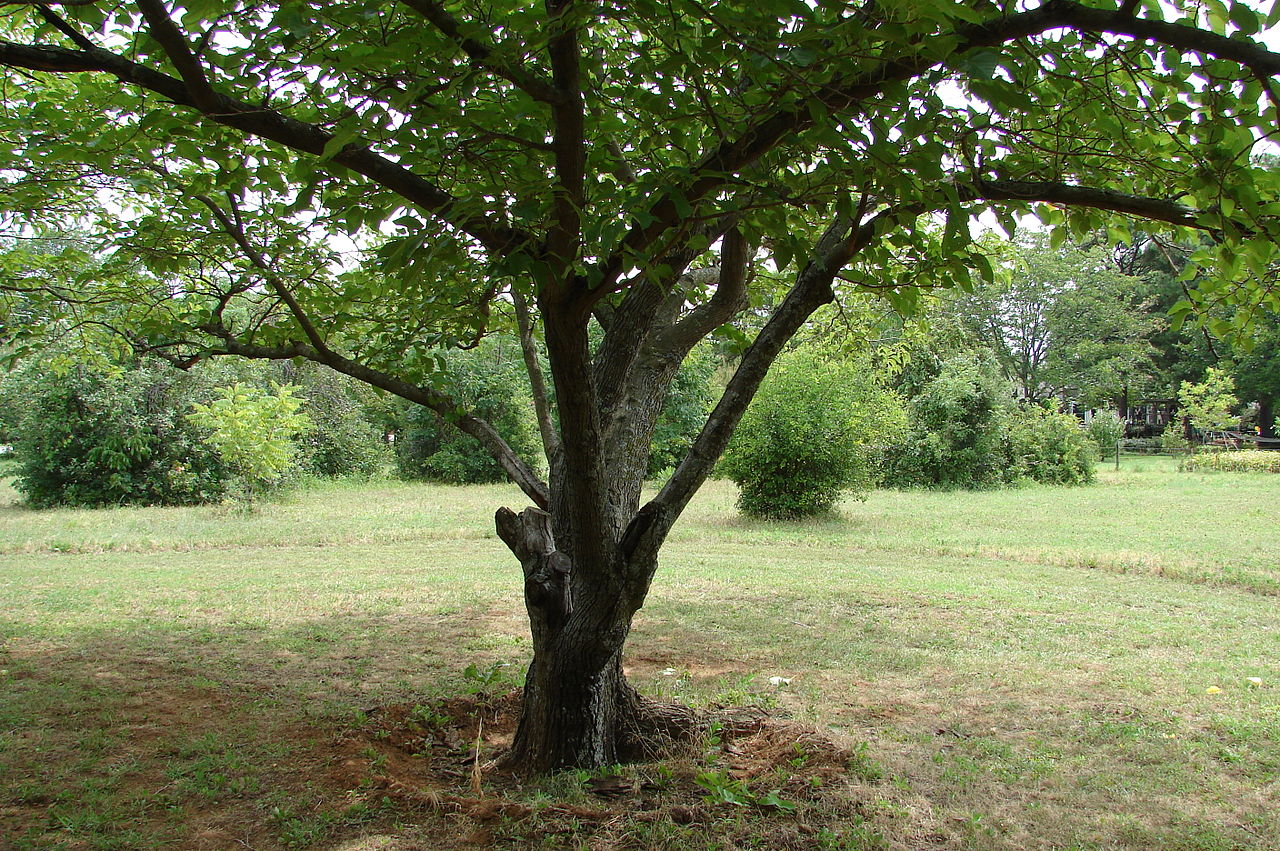
Image - Wikimedia / Loadmaster (David R. Tribble)
It is a cultivar of Morus alba, known as fruitless white mulberry. It grows between 7 and 15 meters, and its crown is rounded with green ovate leaves 4 to 6 centimeters long.
As it does not produce fruit, it does not litter the streets or gardens. Resists up to -18ºC.
Evergreen
Evergreen or evergreen trees are those that remain evergreen. But beware, this does not mean that the leaves do not fall, because they do. What happens is that instead of doing it once a year, they drop them throughout the year as new ones come out.
To complicate matters a bit more, there are some species that are semi-deciduous. They partially lose their crown leaves at some point in the season.
Brachychiton populneus
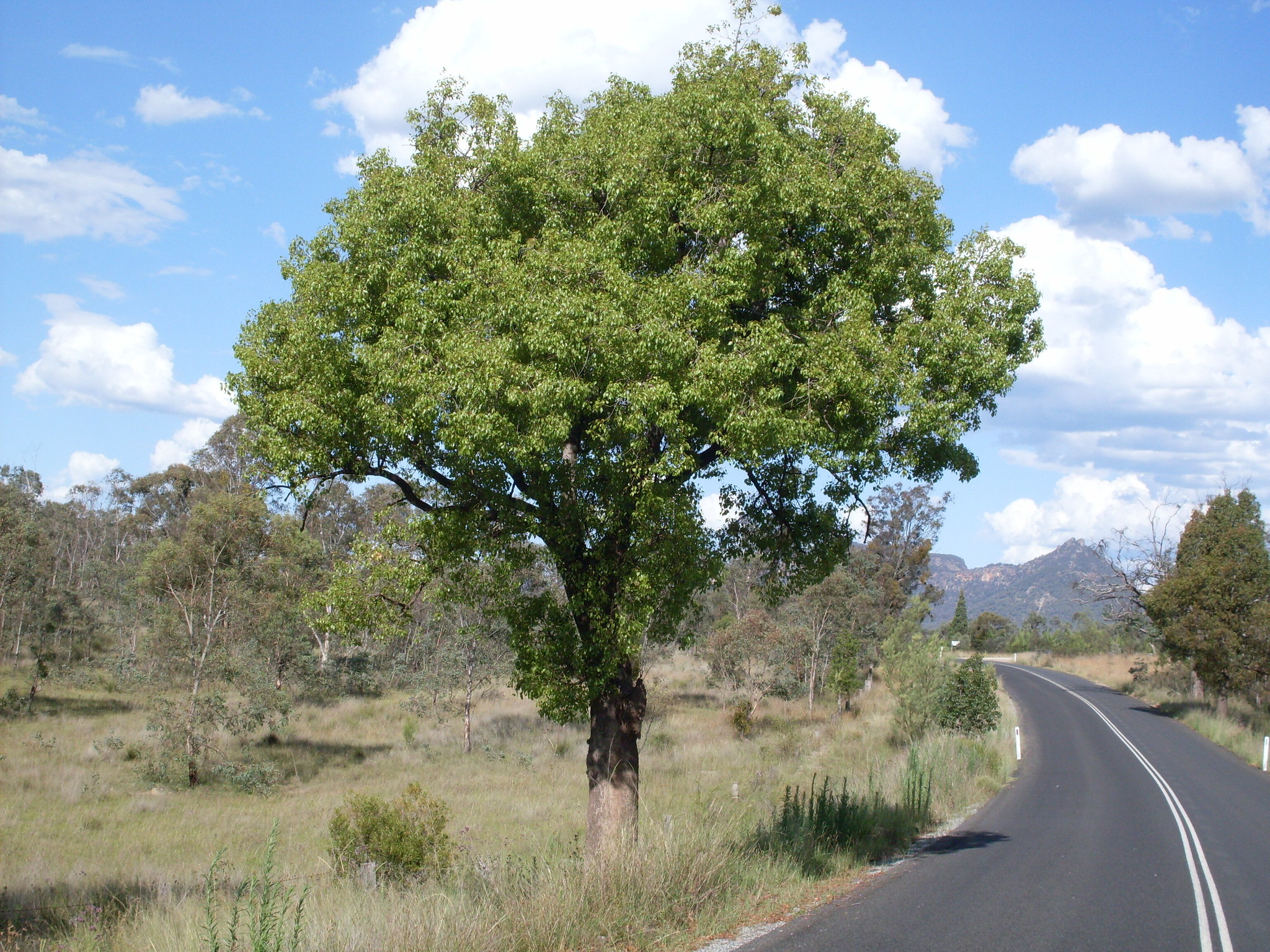
Image - Flickr / John Tann
El Brachychiton populneus, or bottle tree, is a species of evergreen tree native to Australia. Its trunk is straight, almost like a pillar, about 30-40 centimeters in diameter and 10-15 meters high.. Its leaves are lanceolate, green in color. It blooms in spring.
It resists drought very well and also grows fast. And if that was not enough, withstands frosts down to -7ºC.
Laurus nobilis
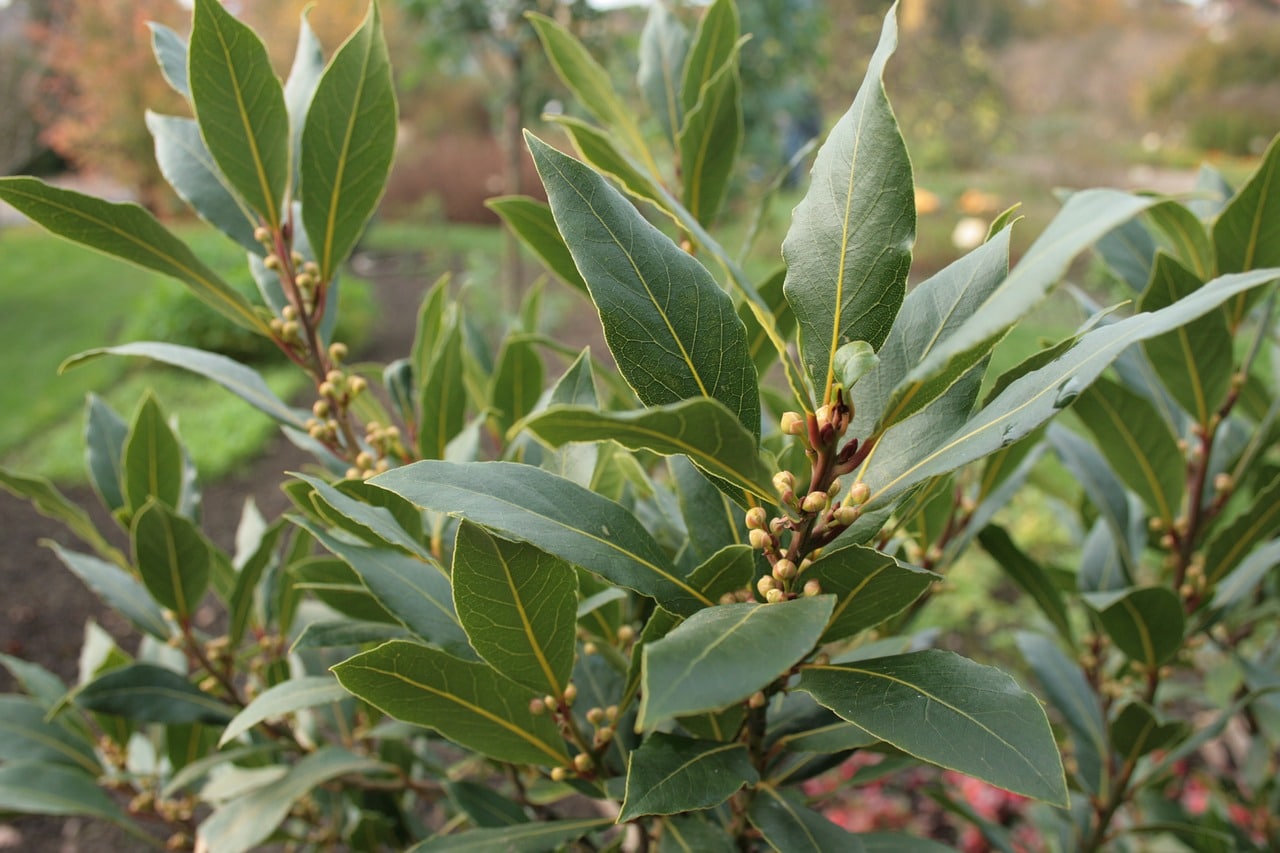
El Laurus nobilis, known as laurel, is an evergreen tree or small tree native to the Mediterranean region. It grows between 5 and 10 meters in height, and has a dense crown with lanceolate or oblong-lanceolate leaves. Its flowers sprout in spring, and shortly after its fruits appear.
Due to its origin, it is a highly recommended plant for gardens where there is little rain. It supports well drought and frosts down to -7ºC.
magnolia grandiflora
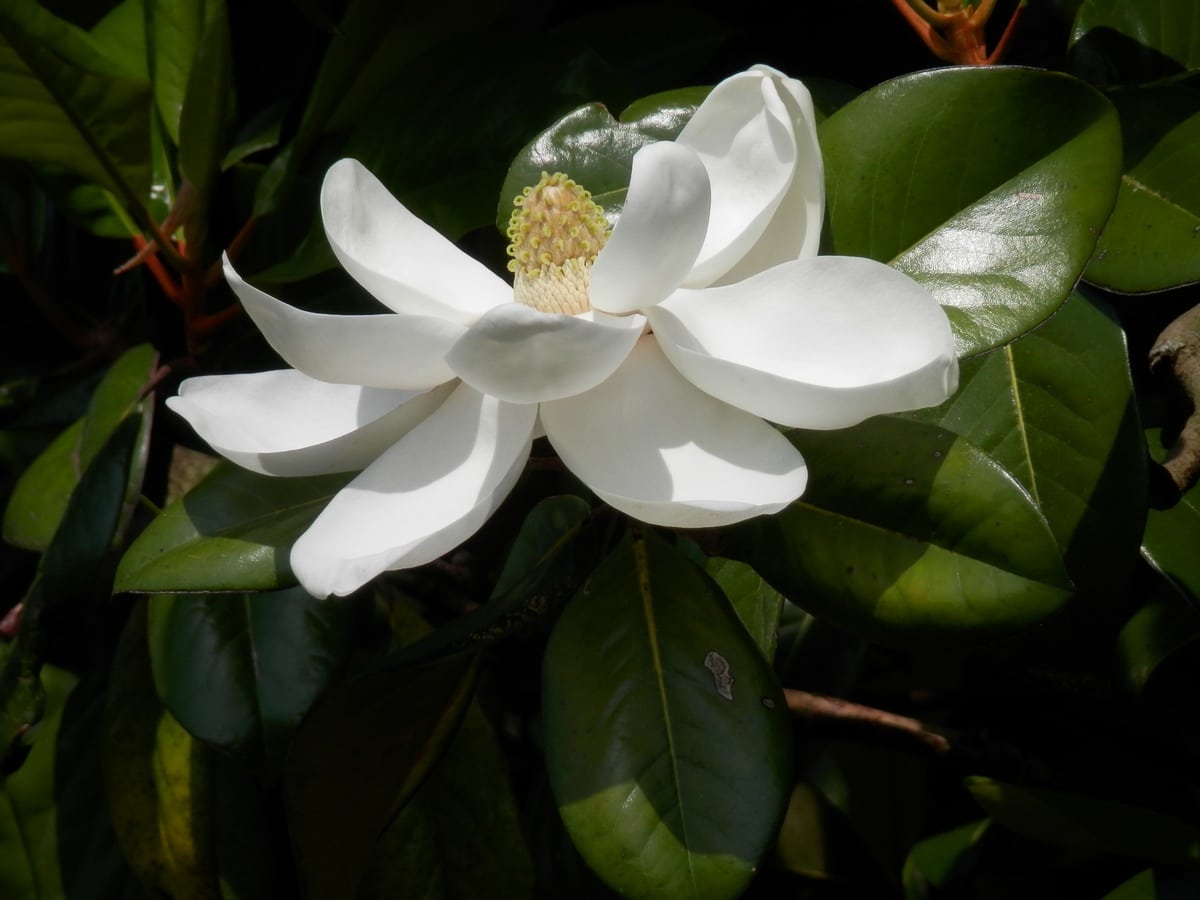
La magnolia grandiflora, called magnolia or common magnolia, is an evergreen tree native to the southeastern United States. Reaches 35 meters in height, and its leaves are simple, large, up to 20 centimeters long by 12 centimeters wide. Its flowers are also large, up to 30 centimeters, and sprout in spring.
It is widely used as an ornamental plant in temperate climates and even in the subtropics. Gives good shade and it resists cold as well as frosts down to -18ºC.
Quercus canariensis
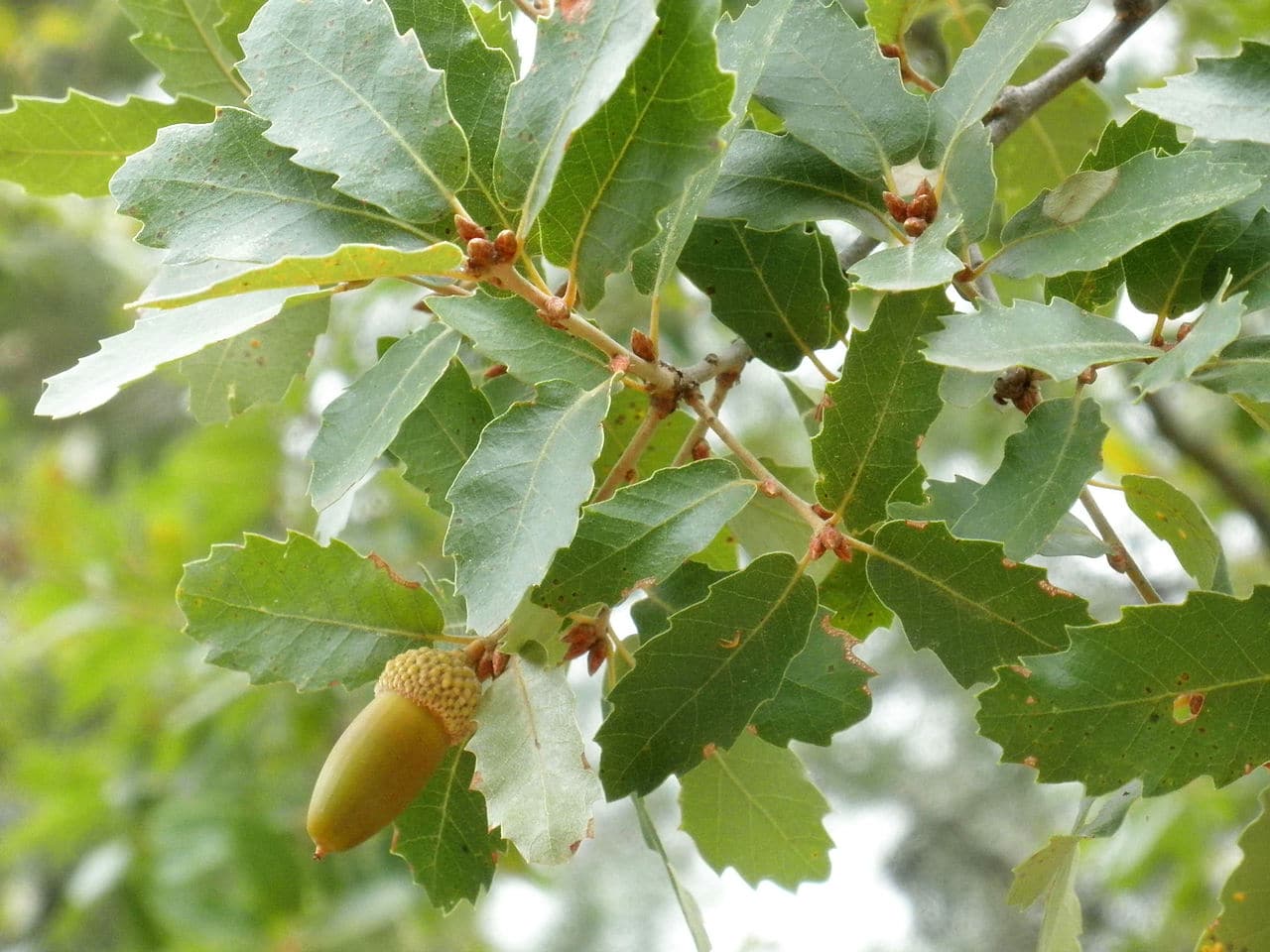
El Quercus canariensis, known as Andalusian oak or Andalusian quejigo, is a semi-deciduous tree native to the western Mediterranean region. It grows up to 30 meters in height, and its crown is wide and dense. It blooms in spring, and its fruits ripen in autumn.
It has a very elegant bearing, and provides good shade. It resists frosts down to -18ºC.
As you can see, there are many that you can choose from that will give you a lot of satisfaction. Depending on your preferences, as well as the weather, plant the one you like the most to have a beautiful garden 🙂.
